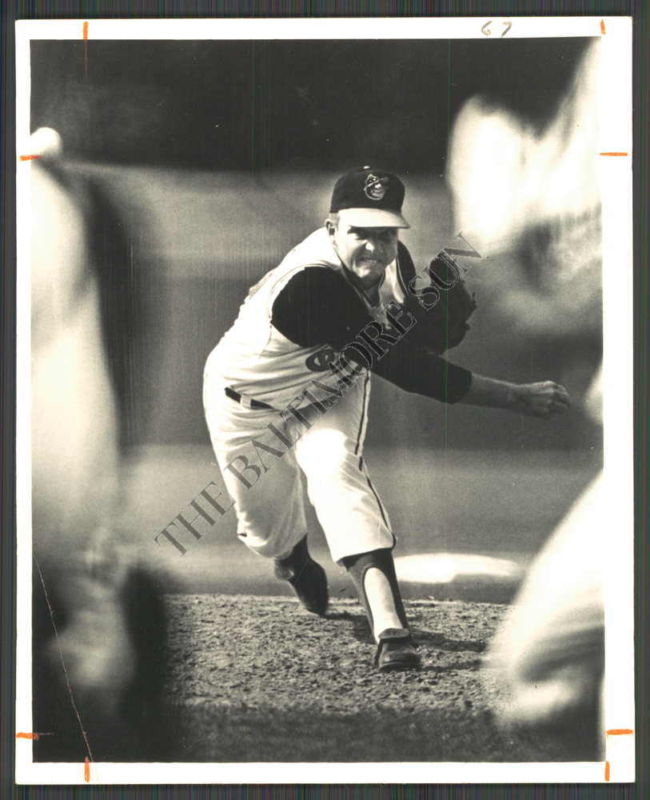Eddie Watt: Former RHP Orioles, Phillies, Cubs- World Series 1970
1. Could you tell us your story on dropping down?
Guess it happened in the middle of a AAA game in 1965, faced former MLB’er Hawk Taylor. Threw one pitch to him and he must have hit it a mile over the left-centerfield wall. When he came up again I decided to change everything. I had thrown the odd pitch sidearm in my career but this at-bat it’s all I threw to him. Realized I needed something different to get the better hitters in AAA out. Before that I was fastball/curveball and then went to sinker/slider. I was able to get more movement from my fastball and get more hitter out. Got invited to Spring Training the following year and made the Orioles. Stayed with that arm angle for the next 12 years.
2. What are some of the advantages you had from your arm angle?
The movement was the biggest thing for me. Think I did sacrifice some velocity but then again the harder I threw from higher arm angle the flatter and more hittable my pitches were. I believe it was easier on my arm too.
3. If you didn't drop down, do you think you would have had the same success?
I don’t think so. After dropping down the next year I made the big league club. Think my AAA pitching coach at the time didn’t like it but it worked for me.
4. What would you tell someone debating on changing their arm angle?
I would tell them to just throw the baseball in the most natural way possible. Some people aren’t built to throw a baseball from over the top. In high school I was asked to play QB on the football team and even there I struggled getting on top of the football. I also played in the IF when I didn’t pitch in high school and college. Even on throws from second I just naturally would be on the side of the baseball and get more movement on the ball.
5. Are there any mechanical tips that you'd give to someone throwing sidearm/submarine?
Don’t really have any mechanical advise. I would say to just throw and throw a lot. Find a arm slot that you are comfortable with and can repeat it. Find a slot that you can have a consistent velocity from, then you can add and subtract your velocity from it. Then from that comfortable slot you can start to fool around with different grips etc to make the ball move little more.
6. What pitches did you throw?
I was sinker/slider after dropping down, also threw cut fastball and a curveball
7. How did you pitch to lefties/righties?
Regardless of which side was up to bat I didn’t try to trick many hitters. My personal philosophy was to throw the best of my ability my best pitch to every hitter. Was told by pitching coach long time ago about pitching to shoeboxes on either side of the plate. When I threw the ball in those areas I was successful. I was down/in to righties with the sinker and then to lefties would go down/away with the sinker. Slider would then go down/away to righties. To lefties would go little more up/in with the slider, try to get little more of a rise from it.
8. Lastly what was your favorite part about pitching from down there?
The success I achieved from there. If that wouldn’t have worked out in AAA would have kept experimenting but I had found something that worked. I was never a great pitcher but I was a good pitcher for several seasons. I never really got hurt til towards the end of my career.
9. When you were coaching was there anything you looked for when dropping someone down?
With my coaching I was at all levels. But when I was in AAA it was mostly pitchers who were having success and close to the big leagues so wouldn’t have been receptive to the change. Then when I went down to the lower levels Rookie ball, was working with guys right out of HS/College so wasn’t going to bother changing anything. There was a reason they had got signed and wasn’t going to change anything. If the organization came to saying a pitcher was struggling and something needed to change then we would look at adding a new pitch, change delivery, arm angles.





